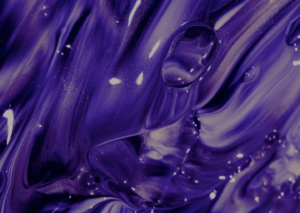
As we step into April, cultural and consumer trends from the past month continue to shape brand strategies and consumer behaviors. Below, I’ll explore key themes gleaned from our research partner Foresight Factory’s latest insights, which revealed significant shifts in wellness culture, retail innovations, and changing attitudes toward sustainability and leisure.
Here are four trends driving consumer engagement, along with some thoughts on how brands can adapt moving forward.
1. Wellness Burnout: The Backlash Against Over-Optimization
The wellness industry, once celebrated for promoting self-care and balance, is facing growing skepticism. Consumers are experiencing “wellness burnout,” where the relentless pursuit of optimization leads to stress rather than relief. Social media platforms like Reddit and Instagram are filled with discussions about the downsides of wellness culture, with hashtags like #wellnessburnout gaining traction.Brands are responding by shifting their messaging. Lululemon’s Global Wellbeing Report highlighted that 61% of people feel pressured to maintain wellness routines, prompting a call for more intuitive and balanced health practices. Meanwhile, running brands like On are embracing a softer, more compassionate approach with campaigns that encourage self-care over relentless improvement. If brands want to lead the way in redefining wellness, they should consider strategies that embrace imperfection, prioritize rest, and promote balance over achievement.
2. International Women’s Day Amid Anti-Inclusion and Belonging
The conversation around International Women’s Day is shifting as inclusion and belonging initiatives face increasing political scrutiny. Major corporations are adjusting their inclusive commitments, responding to a climate where social responsibility is being questioned. Yet, positive messaging around gender equality remains strong, with brands like L’Oréal launching storytelling campaigns that highlight women’s real-life experiences.
Companies navigating this space must balance advocacy with strategic messaging. Aligning with inclusive values while understanding regional and political sensitivities will be crucial for maintaining brand credibility and consumer trust.
3. Net-Zero Dads: The Unexpected Sustainability Champions
A surprising demographic is leading the charge in sustainable technology adoption: middle-aged men, dubbed “net-zero dads.” Despite being less vocal about climate concerns, they are early adopters of green technologies like heat pumps and electric vehicles.
This insight highlights an opportunity for brands to reframe sustainability messaging. Rather than relying on traditional environmental activism narratives, positioning sustainability as a practical, cost-effective choice can drive broader adoption.
4. Cozy Hobbies: The Antidote to Digital Fatigue
Consumers are turning to slow, hands-on activities like knitting, baking, and journaling as a form of stress relief. The “grandmacore” trend, popular on TikTok, romanticizes vintage aesthetics and traditional crafts, reflecting a deeper cultural shift toward unplugging from fast-paced digital life.
Brands can tap into this movement by offering DIY kits, nostalgic product lines, or experiential marketing campaigns that emphasize relaxation and creativity. As consumers seek balance, the appeal of simple, analog experiences continues to grow.
These trends reflect a consumer landscape grappling with burnout, shifting social attitudes, and a desire for convenience and authenticity. Brands that adapt to these insights by embracing balanced wellness narratives, tapping into trending movements for creative campaigns, and fostering sustainability in practical ways will be well-positioned to connect with today’s evolving consumers.





